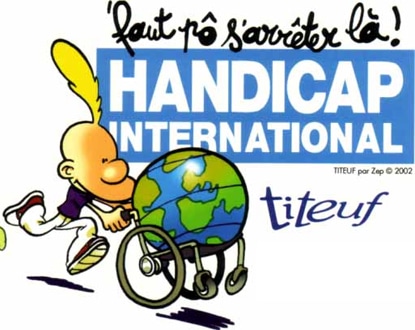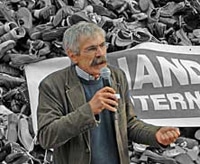Thursday, July 19 marks the 30th anniversary of Handicap International. Present on the stage of major humanitarian disasters, the NGO today embodies the desire to intervene alongside people made vulnerable by a disaster, conflict, or extreme poverty.
 At the head of more than 320 projects in nearly 60 countries, the association has managed to evolve and structure itself to respond to the new humanitarian challenges posed by the proliferation of disasters, deteriorating security, and the deepening of severe poverty.
At the head of more than 320 projects in nearly 60 countries, the association has managed to evolve and structure itself to respond to the new humanitarian challenges posed by the proliferation of disasters, deteriorating security, and the deepening of severe poverty.
Its ambition: to remain present on the emergency fronts, while embedding its action over the long term.
In 1982, Handicap International was born from the initiative of two French doctors and their partners, engaged with hundreds of thousands of Cambodian refugees. Fleeing desperately from the Khmer Rouge regime and the occupation of their country by Vietnamese troops, they formed immense makeshift camps along the Thai border. Among them wandered 6,000 amputees, mainly victims of landmines, strangely deprived of specific humanitarian aid, despite an impressive deployment of international relief.
It was to assist them that Jean-Baptiste and Marie Richardier, joined by Claude and Marie-Eve Simonnot, created the association. Relying on the skills of the refugees and locally available materials, within a few months they opened 17 workshops for manufacturing handmade prostheses, which operated at full capacity during the 13 years of the refugees’ presence.
“Our success owes much to this extreme situation,” recalls
Jean-Baptiste Richardier, now Director-General of the federal network. “For everyone, the need was absolutely evident; that is why the effectiveness of the service provided was perceived as spectacular.”

Jean-Baptiste Richardier: “Cambodia, Romania, Rwanda, Sierra Leone, Haiti… since this founding era, the teams of Handicap International have accompanied populations affected by the most serious ecological or human-made disasters of recent decades.”
NP: Your field of action has considerably evolved…
JBR: “Prioritizing support to disabled people and their families, and more broadly to populations made vulnerable by these trials and faced daily with major difficulties, the association has gradually diversified its activities: covering basic needs in emergencies, care for the wounded, fitting and rehabilitation, but also maternal and child protection, support for families dealing with HIV/AIDS and exclusion, prevention of armed violence, road safety… Not to mention educational or economic integration projects, training of local skills, support to community associations.”
NP: A 360° action…
JBR: “Strengthened by its commitment and legitimacy on the ground, the Handicap International network has successfully engaged in the fight for the ban on anti-personnel mines. From 1992, the NGO denounces “a programmed massacre and the inaction of States”, founds with five other NGOs the International Campaign to Ban Landmines and becomes involved in demining and pollution-cleaning operations.”
NP: That managed to achieve its objectives…
JBR: “This determination resulted in 1997 in the Ottawa Treaty – now uniting the signatures of 162 States having renounced anti-personnel mines – and the recognition of the Nobel Peace Prize for the campaigning NGOs. These same NGOs were also at the origin of the Oslo Treaty – entered into force in 2010 – which bans cluster munitions, another type of indiscriminate conventional weapon by nature, and whose overwhelming majority of victims are civilians long after hostilities have ended.”
NP: Looking towards the future…
JBR: “Over time, the founding association has transformed into a true international organization, structured to contribute to meeting the challenges of solidarity and social support for the most fragile populations, in the aftermath of armed conflicts and natural disasters; but also to face the consequences of poverty and its accompanying deficiencies affecting health structures and social systems; to intensify its various actions in the field of risk prevention, among the main causes of disability; and to finally lead advocacy efforts that promote the access of disabled people to all their rights.”


